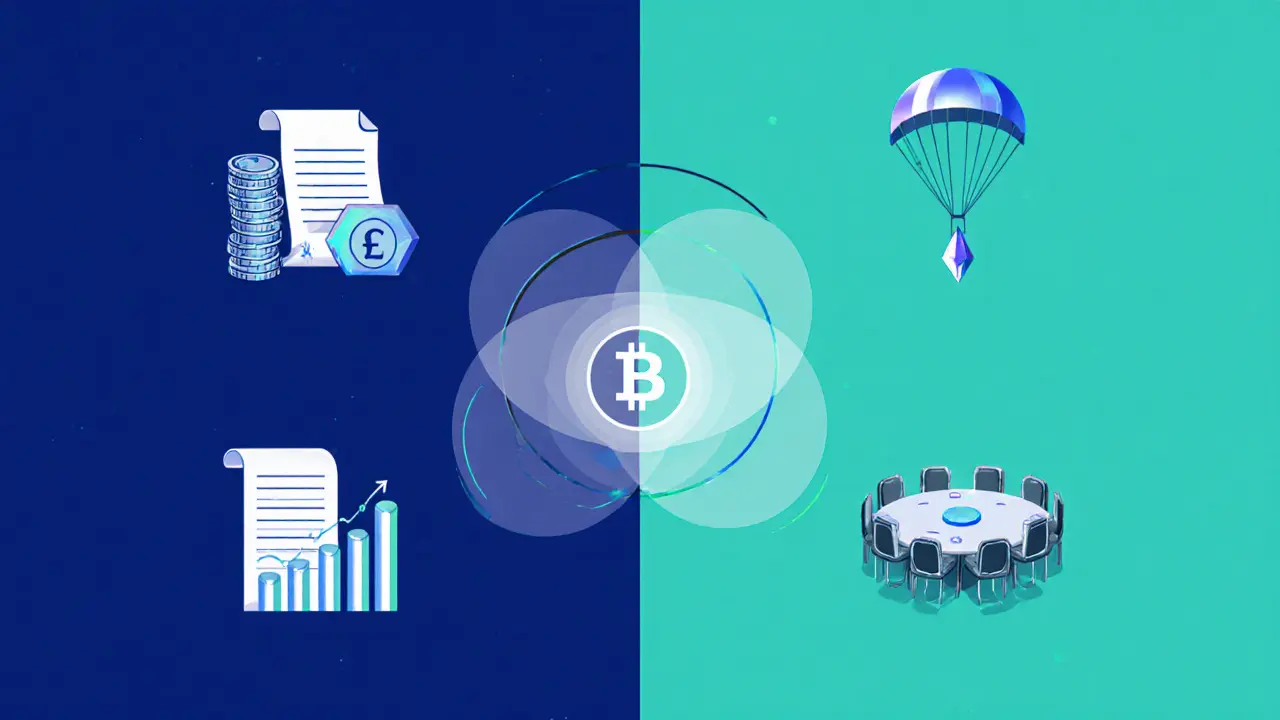Utility Token Distribution: How Tokens Reach Users and Add Value
When working with utility token distribution, the systematic process of allocating functional crypto tokens to users, partners, or ecosystem participants. Also known as utility token allocation, it decides who can access a platform’s services, earn rewards, or vote on upgrades. Utility token distribution isn’t just a one‑off giveaway; it’s a strategic plan that ties token supply to real‑world use cases and long‑term project health. In practice, a successful distribution blends three core pieces: a clear airdrop free token giveaway that sparks community interest, solid tokenomics the economic design governing supply, demand, and incentives, and compliance with relevant crypto regulations. Together they form a loop where each part reinforces the others, making the token both useful and trustworthy.
Key Elements of Token Distribution
First, an airdrop can jump‑start adoption by handing out tokens to early supporters. A well‑executed airdrop requires smart‑contract logic, clear eligibility rules, and a secure claim process – otherwise you end up with bot‑driven spam and a damaged reputation. Second, tokenomics sets the stage: it defines total supply, emission schedule, and utility functions like staking or fee discounts. When tokenomics is transparent, investors can model future value and projects can avoid inflation pitfalls. Third, regulatory compliance shapes how and where you can distribute. Different jurisdictions treat utility tokens as securities, services, or commodities, so a project must map its distribution plan to local licensing, AML/KYC requirements, and reporting standards. Ignoring these rules can halt a launch or draw penalties, which is why many teams run a compliance sandbox before a public rollout. These three pillars – airdrop mechanics, tokenomics design, and regulatory alignment – are tightly linked; a change in one often forces adjustments in the others.
By the time you finish reading this intro, you should see utility token distribution as a connected ecosystem rather than a single event. Below you’ll find deep dives into licensing guides, token‑specific profiles like PREME and SafeMars, sandbox programs, and real‑world case studies that illustrate each pillar in action. Whether you’re scouting a new token, planning your own launch, or just curious about how crypto projects reward their communities, the collection ahead offers practical steps, risk alerts, and actionable checklists to help you navigate the space with confidence.

Utility Token Distribution Models: A Practical Guide for Tokenomics Design
Nov 13, 2024, Posted by Ronan Caverly
Explore paid and free utility token distribution models, their legal implications, design considerations, and practical steps to build a fair, compliant tokenomics strategy.
MORESEARCH HERE
Categories
TAGS
- decentralized exchange
- crypto exchange review
- cryptocurrency
- crypto coin
- CoinMarketCap airdrop
- smart contracts
- tokenomics
- cryptocurrency exchange safety
- crypto exchange
- cryptocurrency airdrop
- crypto airdrop
- cryptocurrency exchange
- crypto airdrop guide
- blockchain token distribution
- DeFi
- crypto exchange scam
- crypto airdrop 2025
- Ethereum
- cross-chain interoperability
- ERC-20
